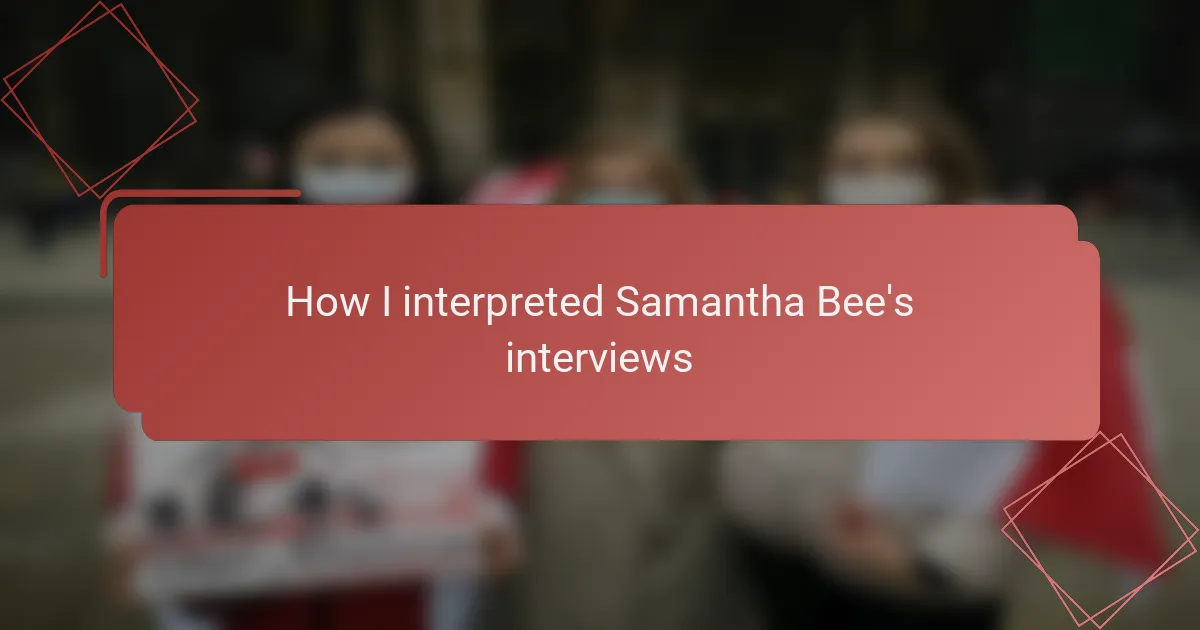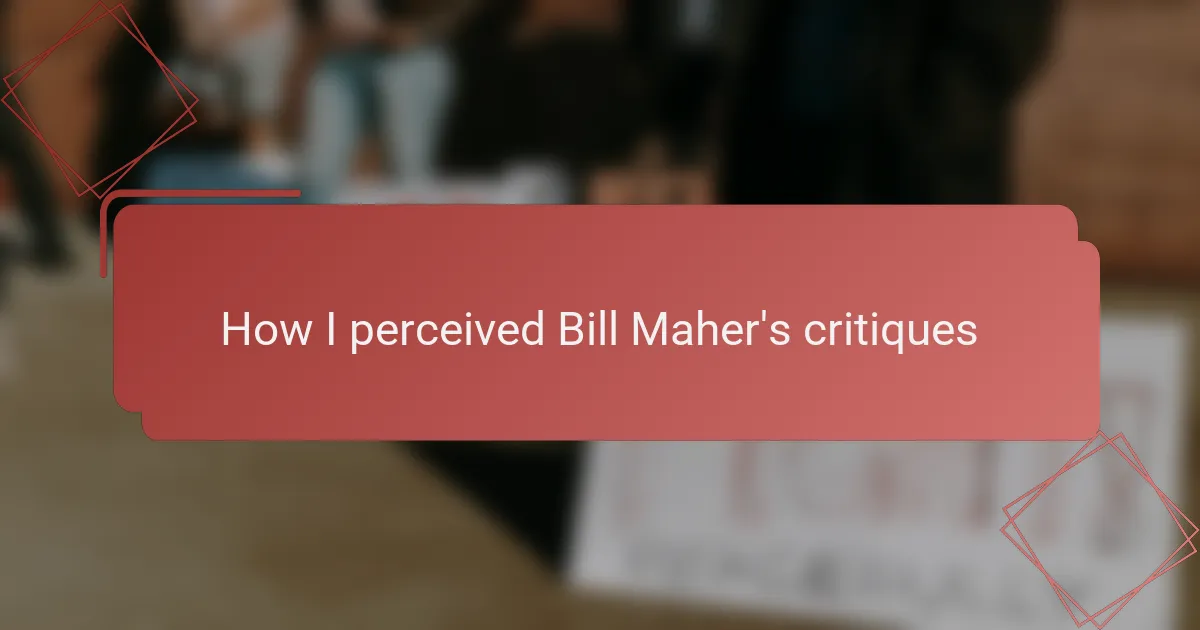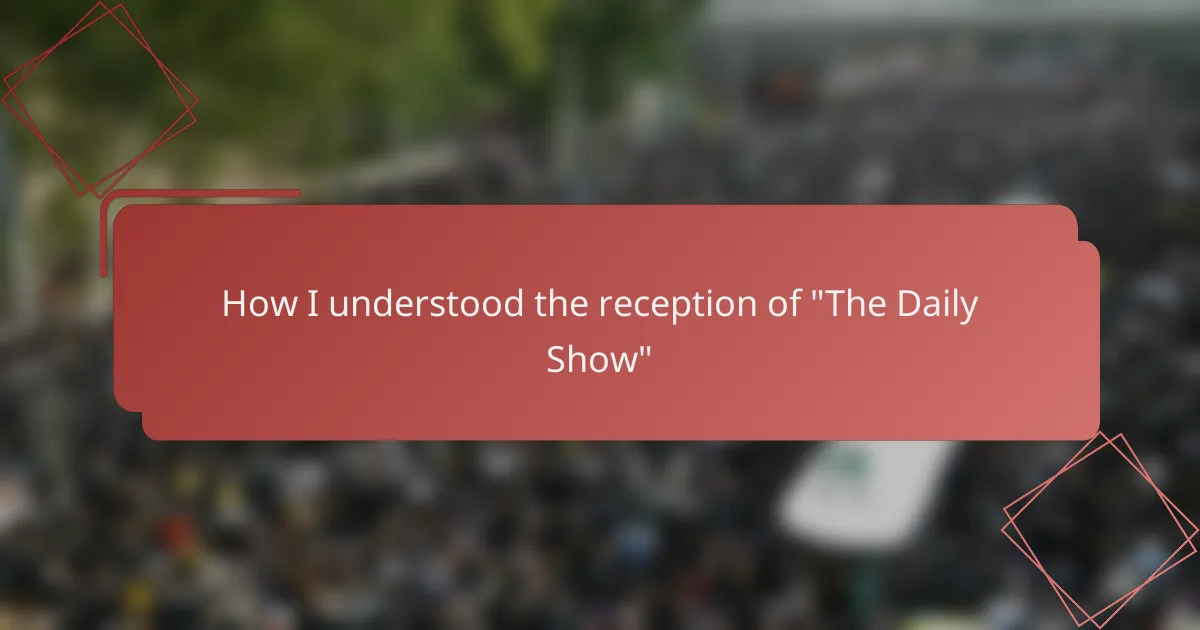Key takeaways
- Political satire challenges the status quo by using humor to provoke thought and reveal uncomfortable truths.
- Samantha Bee’s interview style combines sharp wit with direct questions, making serious political discussions engaging and thought-provoking.
- Her use of irony, exaggeration, and relatable themes enhances the impact of her commentary on pressing social and political issues.
- Satire analysis encourages active engagement with current events, fostering deeper understanding and reflection on personal assumptions.
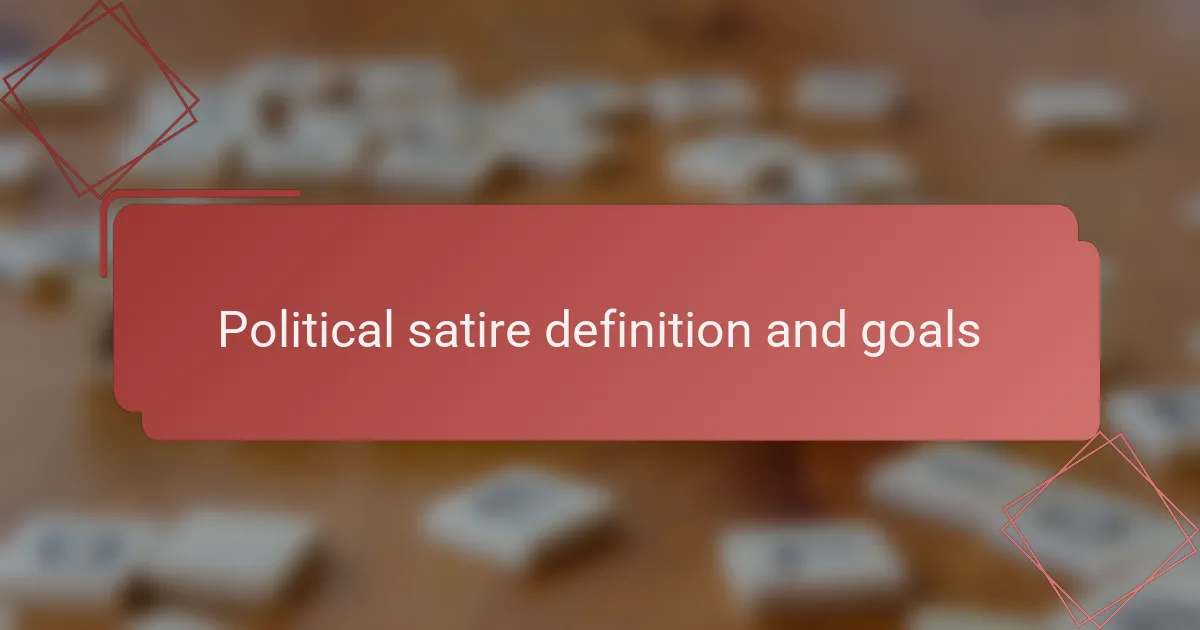
Political satire definition and goals
Political satire, to me, is like holding up a funhouse mirror to politics—it distorts and exaggerates to reveal uncomfortable truths. Its goal isn’t just to mock but to provoke thought and challenge the status quo. Have you ever caught yourself laughing at a skit, only to realize it made you see a political issue in a new light? That moment, I believe, is satire doing its job.
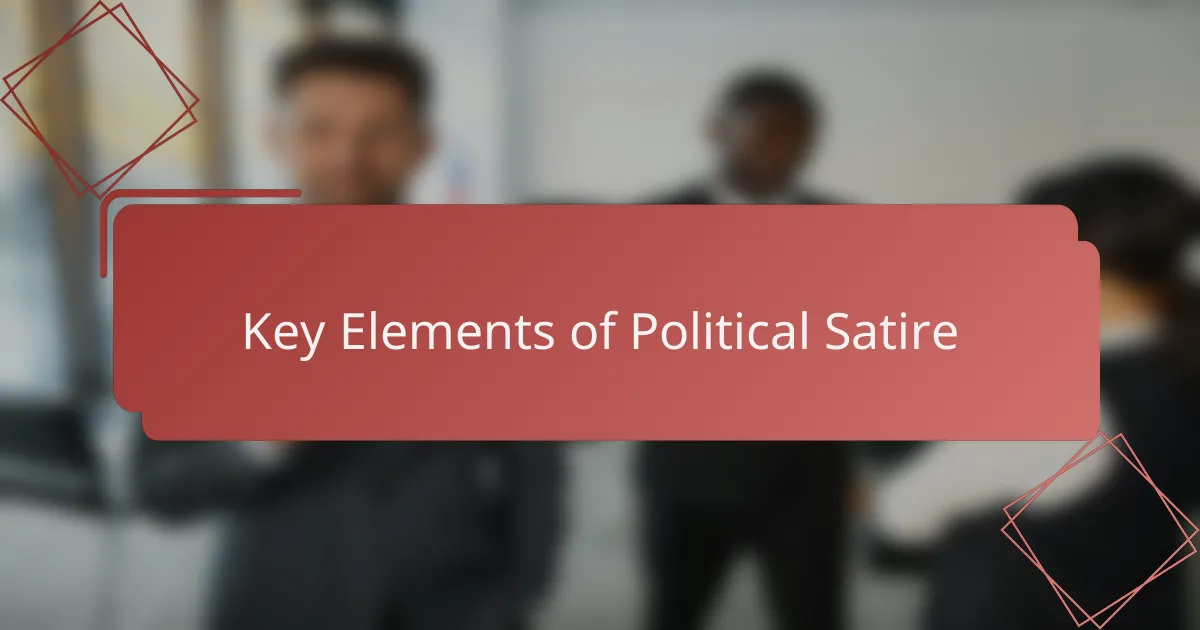
Key elements of political satire
Political satire thrives on sharp wit and layered meaning, and from my experience watching Samantha Bee’s interviews, I noticed how she skillfully balances humor with hard-hitting truths. Her approach isn’t just about making us laugh; it’s about making us think, often challenging the status quo in ways that stay with you long after you watch.
What really stands out in her work is how she uses irony and exaggeration to expose hypocrisy and absurdity. I remember feeling a mix of amusement and frustration during one interview where Bee highlighted political double-talk—it was funny, yes, but it also made me reflect deeply on the disconnect between politicians’ words and actions. This blend is a hallmark of effective political satire.
- Irony: Revealing contradictions between what politicians say and do
- Exaggeration: Amplifying flaws to highlight absurdities
- Wit: Using clever humor to engage the audience
- Critique: Offering pointed social and political commentary
- Relatability: Connecting complex issues with everyday experiences
- Emotion: Evoking feelings like frustration or hope to deepen impact
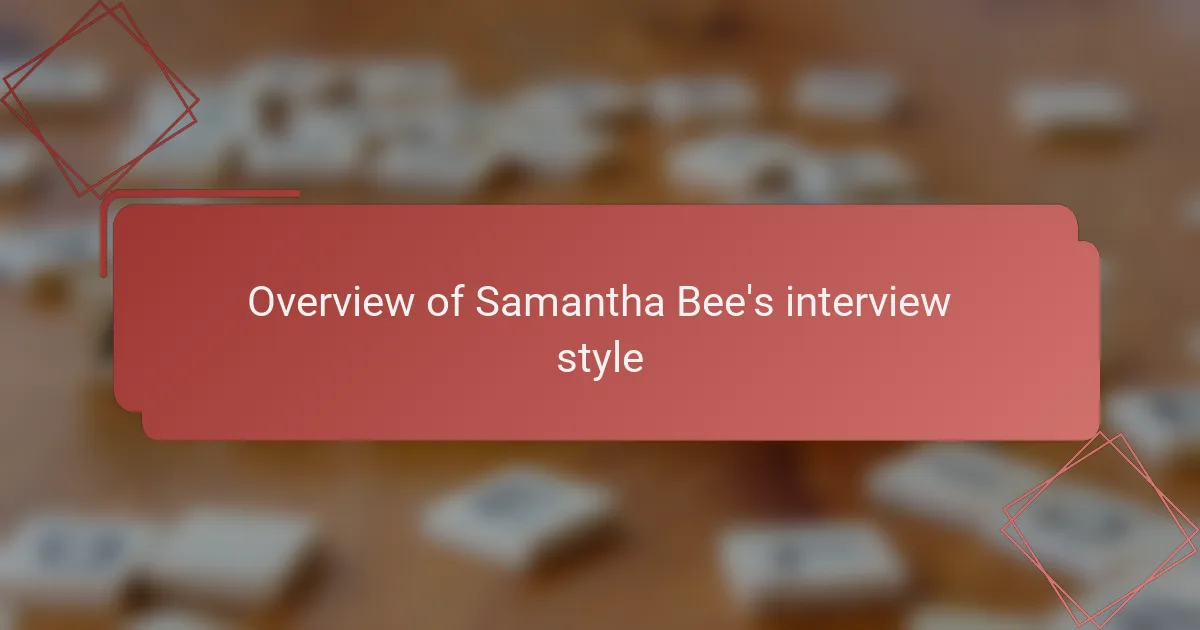
Overview of Samantha Bee’s interview style
Samantha Bee’s interview style strikes me as refreshingly direct yet laced with sharp wit. She has this remarkable ability to combine humor with pointed questions, making her interviews feel both entertaining and revealing. I recall watching one of her segments where her quick comebacks not only disarmed her guest but also invited viewers to think more critically about the political topic at hand.
What really stands out to me is her fearless approach—she doesn’t shy away from tough questions or controversial subjects. This boldness often creates a dynamic where uncomfortable truths come to light, but always with a touch of satire that keeps the tone engaging rather than confrontational.
- Uses humor as a tool to soften serious political discussions
- Employs incisive questioning without losing a conversational flow
- Balances satire with factual inquiry to challenge her guests
- Maintains a casual, approachable demeanor that encourages openness
- Often personalizes topics to connect emotionally with the audience
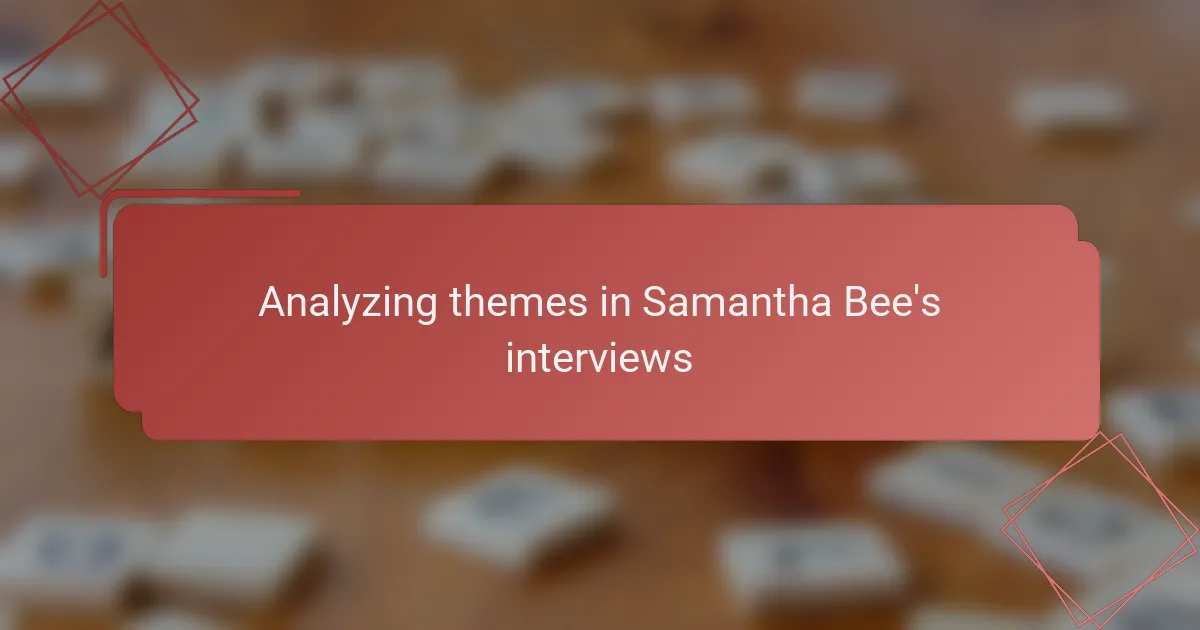
Analyzing themes in Samantha Bee’s interviews
In my experience watching Samantha Bee’s interviews, what strikes me most is how effortlessly she weaves humor into serious political themes. Her sharp wit doesn’t just entertain; it challenges viewers to reflect on pressing issues like inequality, corruption, and media bias. I remember feeling both amused and unsettled during one interview where she masterfully exposed the absurdity behind political doublespeak—it was a moment that made the satire land even harder.
What I find compelling is how her interviews often tackle themes such as:
- The absurdity of political rhetoric and how it masks underlying truths
- The power dynamics between politicians and the public
- Gender and representation in politics
- Media manipulation and framing
- Social justice issues through a satirical lens
These themes resonate deeply with me because they reveal the layers beneath political discourse that are often overlooked, making her interviews not just funny but profoundly thought-provoking.
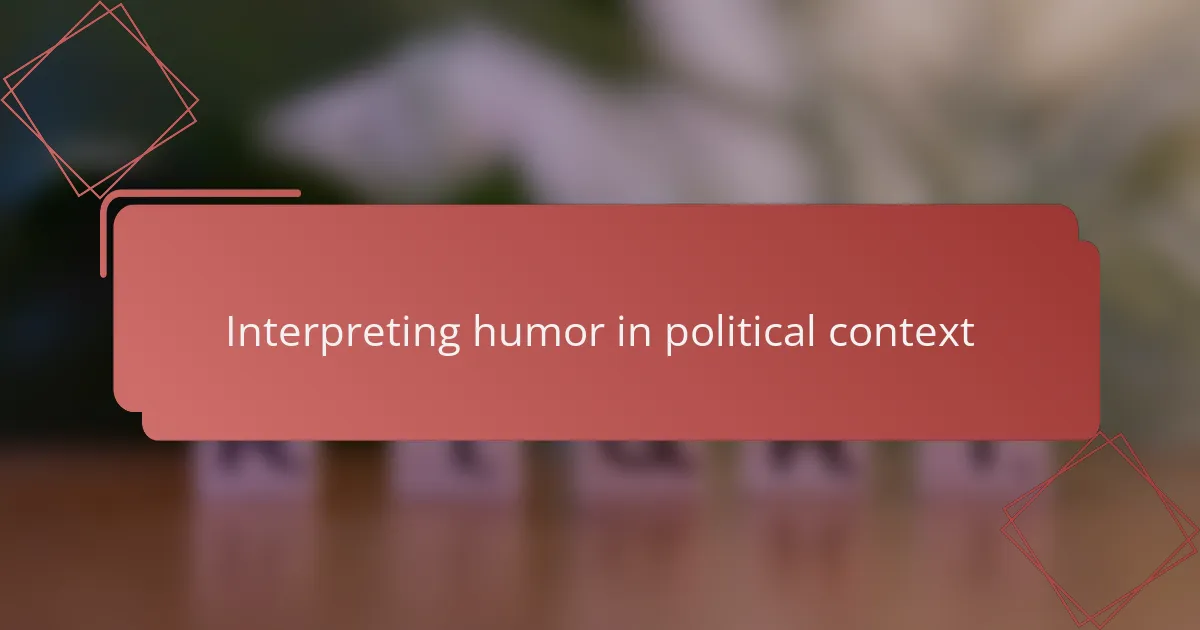
Interpreting humor in political context
Humor in a political context is a delicate art, and I’ve found that Samantha Bee’s interviews masterfully balance satire with sharp critique. What I noticed is how her jokes don’t just aim for laughs—they are carefully crafted to expose contradictions and hypocrisies in a way that invites reflection rather than just ridicule. This approach often left me chuckling but also thinking deeply about the political issues she highlights.
From my experience watching her interviews, the way Samantha uses humor works on multiple levels. Here’s what stood out to me the most:
- She blends irony with factual information, making the audience question official narratives while staying entertained.
- Her comedic timing enhances the impact of serious points, breaking tension without undermining the message.
- By using exaggeration cleverly, she reveals the absurdity of certain political behaviors, making criticism more palatable.
- Personal anecdotes during interviews humanize the political figures, making satire feel less like attack and more like honest conversation.
- The humor often acts as a gateway to uncomfortable truths, encouraging viewers to engage rather than dismiss the topics.
This mix of wit and insight is why I find her interviews not just funny but profoundly relevant in today’s political discourse.
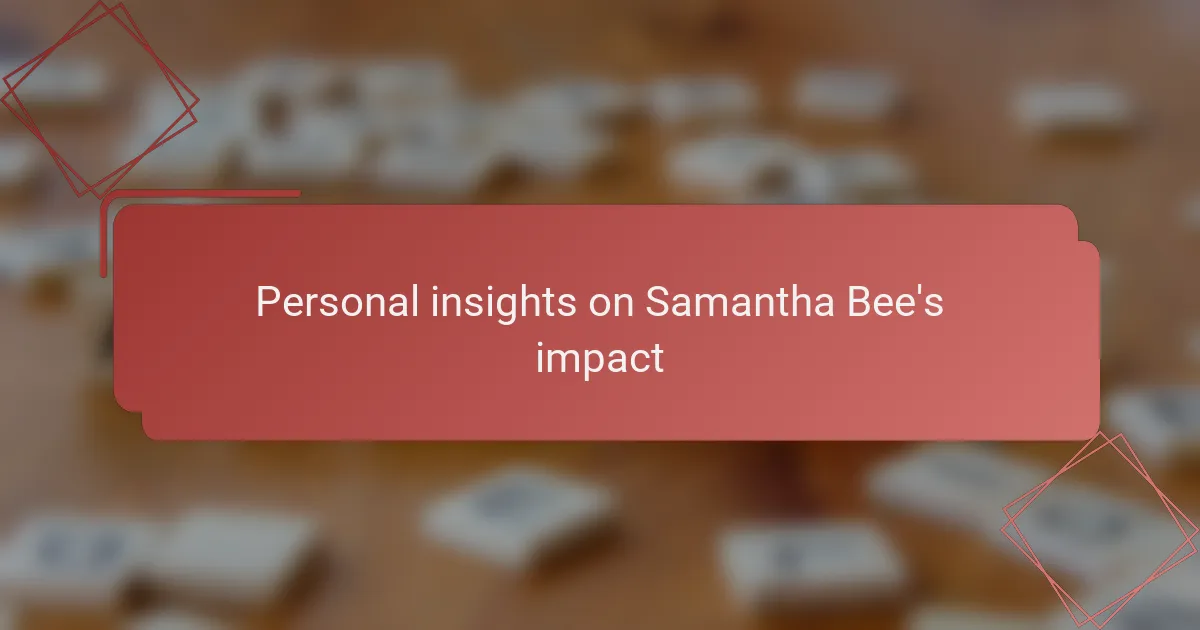
Personal insights on Samantha Bee’s impact
Samantha Bee’s impact, from my perspective, goes beyond just entertainment—she makes political satire feel personal and urgent. I recall feeling that rare mix of laughter and discomfort during her interviews, where humor peeled back the layers of political nonsense and revealed something raw and real underneath. Have you ever watched her and suddenly noticed a bit of your own political frustrations reflected back at you? That’s her unique power at work.
What I appreciate most about Bee’s influence is how she invites viewers to question, not just politicians but also their own assumptions. It’s like she hands you a mirror but dresses it up in sharp wit and bold questions, making the reflection both funny and challenging. Watching her, I often found myself thinking, “Am I really okay with what’s going on here?”—a question that sticks long after the punchline.
In a way, Samantha Bee’s interviews feel like a call to stay engaged with politics without getting lost in cynicism. Her blend of humor and critique creates this strange comfort in discomfort, reminding me that satire isn’t just about laughing at the absurdity but also about caring enough to confront it head-on. That balance, I believe, is the heart of her lasting impact.
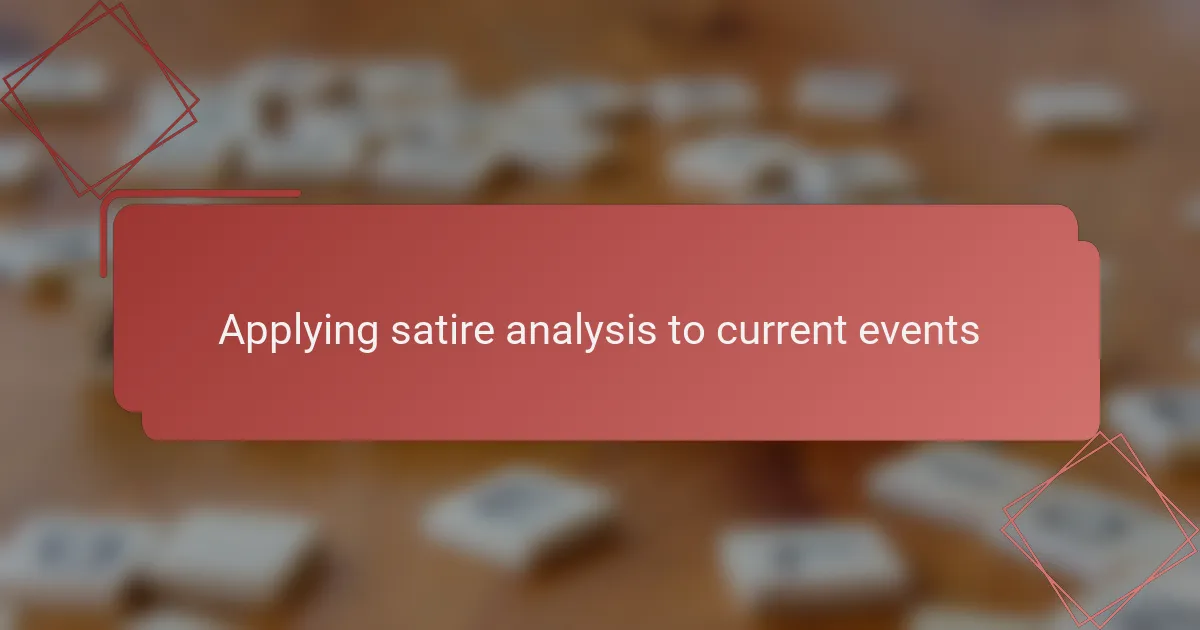
Applying satire analysis to current events
When I apply satire analysis to current events, I find it helps peel back the layers of official narratives that often feel too polished or rehearsed. For example, after watching Samantha Bee’s interviews, I started noticing how her exaggerations and irony don’t just entertain—they spotlight contradictions in real time, making complex issues more accessible. Isn’t it fascinating how laughter can open the door to deeper understanding?
Sometimes, current events seem overwhelming or disconnected from our daily lives. Satire, in my experience, acts like a bridge—connecting big political stories to personal emotions and experiences. I remember one particular segment where Bee’s sharp humor made me pause and reconsider my own assumptions about a news story I’d skimmed over. That moment of reflection, wrapped in humor, made the issue stick with me longer than a straight news report ever could.
What intrigues me most is how satire analysis encourages active engagement rather than passive consumption. When I watch Bee dissect current events with wit and boldness, I feel challenged to question not just the politicians but also the media framing and my own biases. Have you ever found yourself laughing and then suddenly feeling a bit unsettled? That juxtaposition is where satire’s real magic happens—it pushes us to think while keeping us hooked.
